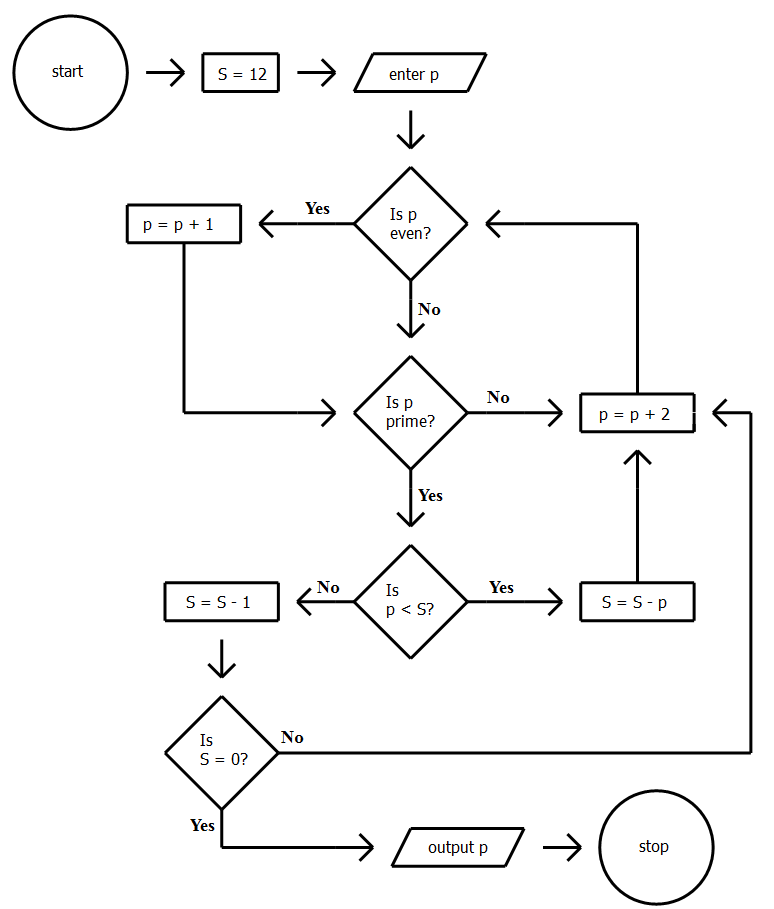
If you’ve made the announcement that you’re applying to business school only to have friends and family wince and ask if you “have to” take the GMAT test, you should know this: The GMAT gets a bad rap. Is it challenging? Definitely. The GMAT likes to throw out a battery of questions in unusual formats.
Furthermore, like a crazy psychic mastermind, it adapts the difficulty level of questions based on how well you’ve answered questions so far (it’s a computer-based adaptive test or CAT) But can you master the GMAT exam? Yes! Read on to find out all about the GMAT, from the definition of GMAT to what skills it tests to how you can prepare for a great score.
Table of Contents
Click the section title to jump ahead to that section.
What is the GMAT? About the Exam
What does the GMAT stand for?
GMAT stands for Graduate Management Admissions Test. Think of it as meaning “the MBA test” because students who take it do so as part of their business school applications. The GMAT is created and administered by GMAC, which works with both business schools and businesses to determine appropriate content for the test.
What Do You Take the GMAT Test For?
Just as the SAT is an admission test high school students need to take to get into college, the GMAT is an admission test after-college folks in the business world need to take to get into business school. The vast majority of MBA programs require a recent GMAT score as an essential part of the admission process.
Different schools use and judge GMAT scores in different ways. As a general rule, a good score on the GMAT can give an applicant a strong competitive edge in applying to the best business schools. If you’re applying to international business schools, you might need to take the GMAT, or a GMAT score may prove to be an asset to your application file. Check with individual programs to verify their GMAT policy and requirements.
Note: If you’re applying to a non-business graduate program, you almost certainly don’t have to take the GMAT.
How and When Do You Take the GMAT?
Here’s what you need to know:
- To take the GMAT test, you’ll need to register on the official GMAC website, MBA.com. Learn more in our post about GMAT registration.
- Cost: Currently, in most of the world, the cost to take the GMAT is $275 (USD) at a test center or $300 online. Because price can differ depending on your location, it’s always good to check with “the official source” for details. You’ll also need a valid ID in order to take the test; we’ll get into more about what this means for international students in a few moments.
- Test Dates: There are a number of in-person options but you also have a huge variety of online, at-home GMAT testing options. However, popular days and times can still fill up. Having a remote proctor means that there are still limits to how many test-takers can sign up for the exam at a given time. Therefore, you should schedule your GMAT test dates well in advance.
The GMAT for International Students
Taking the GMAT can seem like an overwhelming prospect for anyone, and this is all the more true if English isn’t your first language. If you’re applying to U.S. business schools (and/or some international programs, usually those taught in English), you will most likely take the GMAT. Because you’ll almost certainly have to take an English proficiency exam as well, it’s a good idea to get that out of the way first, polishing your language skills in the process.
International students often ask, “Do you need your passport to take the GMAT?” This is a great question, and so important that American students should be asking it, too! The answer for most international test takers is YES. The GMAT policy is that if you’re testing outside your country of citizenship, you need your passport. This is also true for Americans testing abroad. Government-issued IDs won’t even cut it.
If you are testing in your country of citizenship, you may still need your passport as ID. If you’re American and testing in the U.S., a government ID (like a driver’s license or military ID) is also okay. This is sometimes true for international test takers, but not always. Check out the “Special Restrictions” section of the MBA GMAT registration site as you register, but when in doubt, take your passport.
Other than valid identification and registration, the GMAT test’s eligibility criteria are completely open. You don’t need to have finished college to take it (or even started college, for that matter—though let’s face it, it’d probably help to have a few years under your belt).
Can you take the GMAT again?
First of all, don’t worry: yes, you can retake the GMAT. The GMAT policy allows you to retake it any time after the sixteen-day period following your exam. After that, you can retake the GMAT as many as five times in twelve months. If you want to take it even more than that, you can submit a written request to the GMAT, but think seriously before doing this.
The question, in this case, is not so much “how many times can I take the GMAT?” but rather “how many times can I take the GMAT and expect different test results?” Unless you’ve significantly changed your approach to the test, there’s really no good reason to take it more than five times.
What Does the GMAT Exam Evaluate?
While at first glance, the GMAT may appear to contain a motley collection of questions, there is most definitely a method to the (apparent) madness! Take it from GMAC, which explains that The GMAT exam is focused on evaluating your reasoning and analysis skills.
The GMAT will test these skills in a wide variety of ways:
- Your ability to interpret data
- Your quantitative reasoning skills
- Your verbal reasoning skills.
What does the GMAT test look like?
Sections
Think of this as your GMAT exam syllabus. On test day, you’ll see these sections on the GMAT exam, and the nice thing is that you can choose any order in which to work on them:
- Data Insights (20 multi-part questions)
- Quantitative Reasoning (21 questions)
- Verbal Reasoning (23 questions)
You can find more in-depth info on the GMAT format here.
Timing
As of November 2023, The GMAT is 2 hours and 15 minutes long (with one optional 10-minute break). Here’s the GMAT exam breakdown. Remember! You will choose the order in which you attack these sections:
That may seem overwhelming, but with some focused practice and work on GMAT timing strategies, it is doable!
What is a CAT, Anyway?
As I mentioned earlier, the GMAT is computer adaptive test (CAT). On a CAT, the level of difficulty of the questions adapts to your skill level. Questions appear on your computer screen one at a time. You must answer and confirm each question before you can move forward to the next question.
The first question is always a medium-difficulty question. If you answer it correctly, your next question will be more difficult and worth more points. If you answer the first question incorrectly, your next question will be less difficult and worth fewer points.
This has definite consequences for you as a test taker! Although you are allowed to mark questions for review, the GMAT will only allow you to change the answers of up to a maximum of just three questions in each section, and you must make those changes within each section’s time allotment.
In the end, thanks to the CAT format, your GMAT score is based on a complex formula that includes the number of questions that you answer correctly and the difficulty level of each question. This process allows an accurate assessment of your individual ability level in a given subject area.
Extra Read: GMAT vs The Common Admissions Test.
How Does the GMAT Exam Reflect What You’ll Do in Business School? How Much Does the GMAT Matter?
The GMAT is a pretty good evaluation of executive business skills. GMAT questions use business-based scenarios whenever possible, though this will vary on some Quant and Verbal problems. Even though the GMAC is a private company, it tries to test both skills needed to successfully make it through a B-school curriculum and to succeed in the private industry.
In short? Don’t despair—the time you put into prepping for the GMAT has the potential to help you through business school and even for the rest of your career. Pretty good return on investment, eh?
If you’re debating whether to take the GRE or GMAT for business school, check out our post comparing GRE vs. GMAT: How Are They Different?
Scoring
GMAT scoring varies depending on the section. Here’s a quick summary:
- Data Insights: 60-90
- Quant: 60-90
- Verbal: 60-90
- “Total” (i.e. scaled score of all of the above): 205-805
Percentiles
A percentile describes the percentage of test takers who scored lower than you did on the exam. This is particularly important in helping you contextualize your GMAT scores. After all, knowing your GMAT percentile can help you evaluate how close you are to getting into the school of your dreams.
First of all, a few things to know about GMAT scores: They changed in 2023 when GMAT updated the exam. It’s very important to understand that old GMAT scores (200-800 scale) cannot be directly compared to new GMAT scores (205-805 scale). Again, this is where percentiles come into play. For information about score comparisons, check out the video below.
Preparing for the GMAT
Prepping for the GMAT exam is important. Not only is there immense time pressure, which preparing can help you deal with, but the problem formats can be downright confusing (Data Sufficiency, anyone?) if you’ve never seen them before.
Basically, if you’re serious about business school, you should be serious about the GMAT and prep for it. While not the only admissions criterion, your score on the GMAT test can be the difference between you getting accepted or rejected from your target MBA school.
That being said, a great or even perfect GMAT score cannot guarantee your admission into business schools. In addition to your GMAT score, your work experience, essays, recommendations, and interview are all factors that contribute to your acceptance or rejection from a business school.
Check out these resources to learn about the best way to prepare for the GMAT and what materials to use:
- Start with our guide to how to prepare for the GMAT
- Plan your prep timeline with How Long Should You Study for the GMAT?
- If you’re deciding between prep options, check out our comparison of the Best GMAT Prep Courses
- Pick the study plan that fits your needs from our free GMAT study schedules. Or you can build your own GMAT study schedule!
- Learn how to keep a GMAT error log (with template)
- Graphics Interpretation (GI): 20-30%
- Two-Part Analysis (2PA): 10-20%
- Table Analysis (TA): 10-20%
- Multi-Source Reasoning (MSR): 10-20%
- Data Sufficiency (DS): 20-40%
- Problem Solving
- Arithmetic
- Number properties
- Pre-algebra
- Algebra
- Word problems
- Reading Comprehension questions give you a short (200-300 words) or long (300-400 words) passage, then ask you about what you’ve read with three or four multiple-choice questions, respectively.
- Critical Reasoning questions set forth an argument that you then analyze. There are eight different types of CR questions, which you can read about in the above post, all of which are multiple choice, with five answer choices.
- A Mock GMAT, which you can use as a diagnostic test.
- Free GMAT Flashcard Apps so you can study anywhere you bring your phone.
- Free Video Lessons from Magoosh’s premium GMAT prep.
- Finally, check out our Zen Boot Camp for the GMAT. Particularly if you’re scoring high already—but not quite high enough—mastering the mental game is crucial!
- Getting a great score on the GMAT exam does take lots of preparation, and for a truly tailored approach, let me make a suggestion. After you’ve worked through free resources, try out Magoosh GMAT prep!
- You can take two free CATs at the GMAC website, which is a good place to start. It’s best to use these later on in your practice, as test day approaches.
- It’s pricey, but you can also buy more exams and questions from the GMAC (or you can also find excellent questions for free right here on the Magoosh blog!)
- While the GMAT Official Guide is a must-have, you should also know that the GMAC also puts out specialized Verbal, Quantitative, and Data Insights guides, too. A
Now that you have a plan, let’s talk about what exactly you’ll be studying. We’ll dive deeper into the GMAT exam content to break it all down.
GMAT Section Breakdown
Data Insights (DI) Section
The GMAT Data Insights section is set up to test higher-order reasoning. This includes questions about the integration of information (organizing, synthesizing), evaluating information (tradeoffs and benefits of different actions), making inferences from data (and predictions), relating information to other data, and strategizing based on data provided.
You’ll have 20 questions to answer in 45 minutes. Keep in mind that these are often complex, multi-part questions. A big part of mastering DI depends on your ability to master the timing.
These 20 questions will each be one of five types:
DI Practice Questions
Here’s a sample DI problem for you to try! (If you’re looking for more practice and tips, the Magoosh GMAT Blog has plenty of free resources!)

The flowchart represents a mathematical algorithm that takes one positive integer as the input and returns a positive integer as the output. Processes are indicated in the rectangular symbols in the flowchart. Each process is represented by an equation, such as p = p + 1. In this particular process, one is added to the current value of p, and the sum becomes the new value of p. For example, if p = 8 before the process, p = 9 after the process.
1) A value p = 50 is initially entered. When S first has a value of S = 10, p has a value of.
2) An initial entry that reaches an output in the fewest number of steps is.
Click to view answers and explanations
Question 1: D) 59
Question 2:C) 10
For mathematical and computer science folks, a flow chart diagramming a mathematical algorithm might be one of the most enjoyable games the GMAT exam provides.
For less math-y folks, though, this question type could be a living nightmare.
How does someone not adroit at mathematical reasoning even begin to make sense of this? Click here for a video explanation of the answer!
Quantitative Reasoning (Quant) Section
For GMAT Math, you’ll answer 21 questions in 45 minutes, giving you slightly over two minutes per question (but remember, you need to actually select the right answer and wait for the next screen to load! So let’s say two minutes). Within Quant, you’ll encounter just one type of question:
We’ll take a closer look at how these question formats test your math and reasoning skills in just a minute. Before we do, though, here’s what you can expect to see, concept-wise, on GMAT Quant.
Concepts on the GMAT Math Section
You may have heard rumors about the difficulty of GMAT math, or maybe you’ve tried out a few problems yourself and been bowled over by the high-level thinking they require. But one thing you won’t have encountered is any concept beyond high-school level math.
Strange, but true: the GMAC knows that there are humanities majors among us who may not have thought about calculus integrals in years…and even then, only under duress (that last one may be just me). So instead, the GMAT exam tests quantitative reasoning (notice a pattern here?) by piling relatively simple concepts on top of each other to create multi-level problems.
So yes, you should review the following areas before test day:
But, in addition to that review, you should spend the majority of your Quant study time focusing on practice problems and practice tests, because although the material the GMAT tests isn’t that tricky, the way the GMAT tests it can be pretty tricky indeed.
Quant Practice Questions
Ready to put those strategies to work? Try your hand at this GMAT Quant practice question. And, if you skipped the DI practice questions (#1-2), jump back up by clicking here.
3. Problem Solving
Paracelsus University has two kinds of professors, academic professors and professional professors. At Paracelsus University, 60% of the professors are academic professors, and 70% of the professors are tenured. If 90% of the professors at Paracelsus University are academic professors or tenured or both, then what percent of the professional professors there are tenured?
Click to view the answer and explanation
3. 75
We used a double matrix to solve this one. Confused? href=”https://gmat.magoosh.com/questions/12653/a/311922534″ target=”_blank” rel=”noopener noreferrer”>Click here for a video explanation of the answer!
Verbal Reasoning Section
The GMAT Verbal section is 45 minutes long; during those 45 minutes, you’ll encounter 23 multiple-choice questions. Like the Quantitative section, the Verbal section is computer adaptive, which means the test will be adjusting the difficulty as you move through the section.
GMAT Verbal Concepts
There are two question types on the Verbal Section: Reading Comprehension (RC) and Critical Reasoning.
These two types will be roughly evenly distributed.
Verbal Practice Questions
Time for some GMAT Verbal sample questions! We’re picking up our practice where we left off, at #4. Still need to get caught up? No problem. You can try #1-2 here and #3 here.
4. Reading Comprehension
Most educated people of the eighteenth century, such as the Founding Fathers, subscribed to Natural Rights Theory, the idea that every human being has a considerable number of innate rights, simply by virtue of being a human person.
When the US Constitution was sent to the states for ratification, many at that time felt that the federal government outlined by the Constitution would be too strong, and that rights of individual citizens against the government had to be clarified. This led to the Bill of Rights, the first ten amendments, which were ratified at the same time as the Constitution.
The first eight of these amendments list specific rights of citizens. Some leaders feared that listing some rights could be interpreted to mean that citizens didn’t have other, unlisted rights. Toward this end, James Madison and others produced the Ninth Amendment, which states: the fact that certain rights are listed in the Constitution shall not be construed to imply that other rights of the people are denied.
Constitutional traditionalists interpret the Ninth Amendment as a rule for reading the rest of the constitution. They would argue that “Ninth Amendment rights” are a misconceived notion: the amendment does not, by itself, create federally enforceable rights. In particular, this strict reasoning would be opposed to the creation of any new rights based on the amendment. Rather, according to this view, the amendment merely protects those rights that citizens already have, whether they are explicitly listed in the Constitution or simply implicit in people’s lives and in American tradition.
More liberal interpreters of the US Constitution have a much more expansive view of the Ninth Amendment. In their view, the Ninth Amendment guarantees to American citizens a vast universe of potential rights, some of which we have enjoyed for two centuries, and others that the Founding Fathers could not possibly have conceived. These scholars point out that some rights, such as voting rights of women or minorities, were not necessarily viewed as rights by the majority of citizens in late eighteenth century America, but are taken as fundamental and unquestionable in modern America. While those rights cited are protected specifically by other amendments and laws, the argument asserts that other unlisted right also could evolve from unthinkable to perfectly acceptable, and the Ninth Amendment would protect these as-yet-undefined rights.
Constitutional scholars of both the traditionalist and liberal views would agree that “Ninth Amendment rights”
5. Critical Reasoning
In social science research, “highest education level attained” would refer to the most advanced grade or degree achieved by an individual—for some individuals, it may be a grade in grade school, and for other individuals, it may be a Bachelor’s Degree, a Master’s Degree, or Ph.D. (which is considered the highest education level). A recent study has shown a strong correlation between highest education level attained and proficiency in chess. Another result, studied at many points throughout the 20th century, shows a marked positive correlation between highest education level attained and income level.
Assuming the statements above are true, what conclusion can be drawn from them?
Click to view answers and explanations
Question 4) “Ninth Amendment rights” are not stated explicitly in the Bill of Rights. Click here for a video explanation of the answer!
Question 5) It is possible that a person who has attained only a sixth grade level of education could earn more than a person who has a Ph. D. Click here for a video explanation of the answer!
Resources and Next Steps
The GMAT can be an overwhelming test, but it can also be a great opportunity to sharpen your reasoning skills, focus your ambitions, and prepare yourself for the business world. With the right resources and the right strategy, you can master this “extraordinarily challenging” test and get a score you can be proud of.
But with all that said, if your first foray into GMAT practice has you a little freaked out, that’s okay! There are a ton of free resources right here on the Magoosh GMAT Blog to help you prepare for the GMAT. For example:
These resources will give you a great grounding in what the GMAT looks like, how to study for it, and the concepts that you’ll see on test day!
Outside of Magoosh, I’d recommend checking out these official GMAT exam resources:

You’ve reached the end of this post! Give yourself a well-deserved pat on the back, then leave us a comment with any questions or comments you still have. Happy Studying!





Leave a Reply